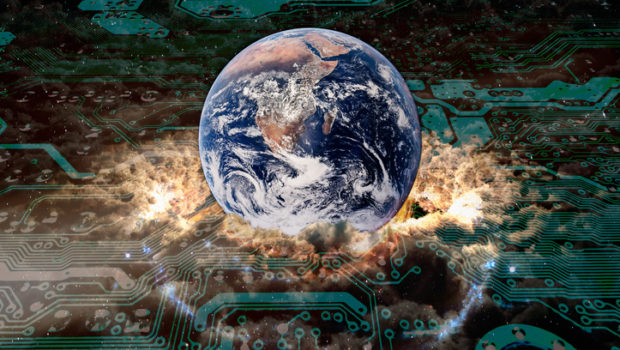TechMatters: 3 environmental issues technolgy can solve
TechMatters is a semi-regular column exploring the intersection between tech and our lives, why it matters, and how it’s helping to improve our quality and vitality of life.
Here, we will profile new startups and products that have a vested interest in the betterment of life on a physical, emotional, and humanitarian level.
The harmful effects of climate change are all around us. Icelandic glaciers are melting. Millions of pounds of microplastics are pouring into the ocean and killing sea creatures, and an increasing number of extreme weather events continue to wreak havoc in communities all over the world.
These kinds of issues are prompting government and corporate leaders across the globe to find ways to combat global climate change.
As such, companies of all sizes are implementing environmental initiatives in manufacturing, shipping, and sales. Furthermore, Big Tech is getting on board to reduce operational emissions and develop devices to help customers live a more sustainable life.
Unfortunately, environmental concerns continue to threaten life on this planet. Technology is already making life-saving medical advances. Moving into the next decade, technology can tackle and help preserve the Earth for future generations.
Water Shortage
Water is a vital, life-sustaining natural resource. Alarmingly, in 2018, 2.1 billion people worldwide lacked safe drinking water at home.
Although 70 percent of the Earth is covered in water, only 2.5 percent is freshwater. According to a report from the United Nations University Institute for Water, Environment and Health, 1.8 billion people currently use drinking water contaminated with feces.
By 2050, another 2.3 billion people are expected to live in regions with severe water stress. Therefore, researchers are continually looking for ways to combat water scarcity.
Last year, the SkySource/Skywater Alliance won the Water Abundance XPRIZE for combining two technologies —dehumidification and bio gasification — to create an affordable system that can pull 2,000 liters of water per day from the atmosphere. The groundbreaking system produces water using the renewable processes inside a shipping container.
Heading into 2020, researchers need to continue this effort and look for more ways to solve the global water shortage crisis.
Deforestation
When a massive number of trees are destroyed, a vast amount of carbon emissions flood the atmosphere.
Wildfires alone decimate 3 to 10 million hectares every year. According to the Union of Concerned Scientists, beef, soybeans, palm oil, and wood are four more major deforestation drivers. Of this group, beef makes the most significant impact.
Converting forest to beef pasture, mostly in Latin America, eradicates 2.71 million hectares of tropical forest each year. This destruction accounts for over 50 percent of tropical deforestation in South America.
If lots of people adopt a plant-rich, meat-free diet (or significantly cut back on beef consumption), it could help alleviate the problem. However, meat-lovers might not want to give up eating steak. Therefore, developing new, eco-friendly ways to produce meat is essential.
Instead of raising cattle that releases methane in grazing land, many researchers are growing “cell-based” beef in a lab. Yes, it sounds a little sci-fi. However, crew members at the International Space Station successfully grew meat in their interstellar home.
First, researchers on Earth placed cow cells in a “broth” of nutrients that mimicked the inside of a cow. Then, they put the mixture in closed vials and sent them to space.
Upon arrival, ISS astronauts loaded the vials into a magnetic printer that replicated the cells. This process produced tissue (the “meat”), and they sent the sample back to Earth.
If this type of technology is perfected, in the future, people can eat meat without harming the environment.
Airplane-Related Global Warming
In today’s fast-paced modern world, flying is a vital mode of transportation. It also stimulates the global economy. Namely, aviation supports 63 million jobs worldwide. It also enables $2.7 trillion in global GDP, the Air Transport Action Group (ATAG) reports.
Unfortunately, traveling by airplane has a greater impact on climate change than driving or taking a train. It accounts for four to nine percent of human activity’s total effect on this problem. According to a 2017 report, CO2 emissions from international aviation have increased 83 percent since 1990.
Furthermore, high-altitude aircraft emissions cause a series of chemical reactions and atmospheric effects that produce an environmentally harmful “net warming effect.” Plus, plumes of exhaust that stream across the sky behind a plane also contribute to global warming.
Electric cars are becoming increasingly common and widespread. Similarly, producing electric planes is one eco-friendly air travel solution. Thankfully, aerospace companies are slowly developing the technology.
For example, Harbour Air in Vancouver is aiming to fly an all-electric fleet. To achieve this goal, the company is teaming with magniX to retrofit some of its aircraft with a battery-electric propulsion system.
On Dec. 10, the firm made history by completing the flight of the world’s first commercial electric plane.
“The transportation industry and specifically the aviation segment that has been, for the most part, stagnant since the late 1930s, is ripe for a massive disruption. Now we are proving that low-cost, environmentally friendly, commercial electric air travel can be a reality in the very near future,” said Roei Ganzarski, CEO of magniX in a statement.
This fantastic feat sets the stage for revolutionizing air travel around the world. It will undoubtedly take time to electrify air travel on a global scale. However, Harbour Air’s huge milestone bodes well for the technology’s future.









Gloss